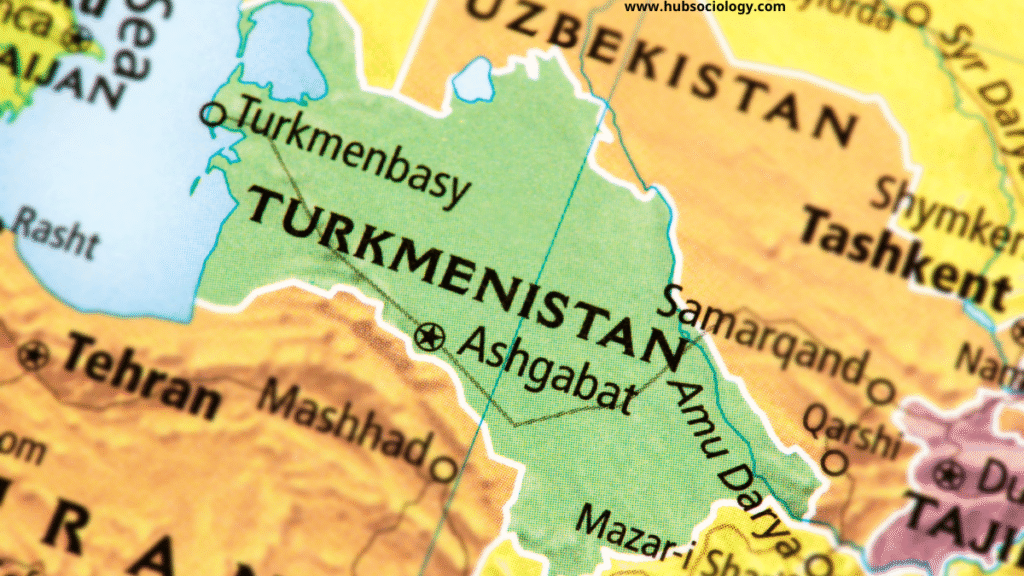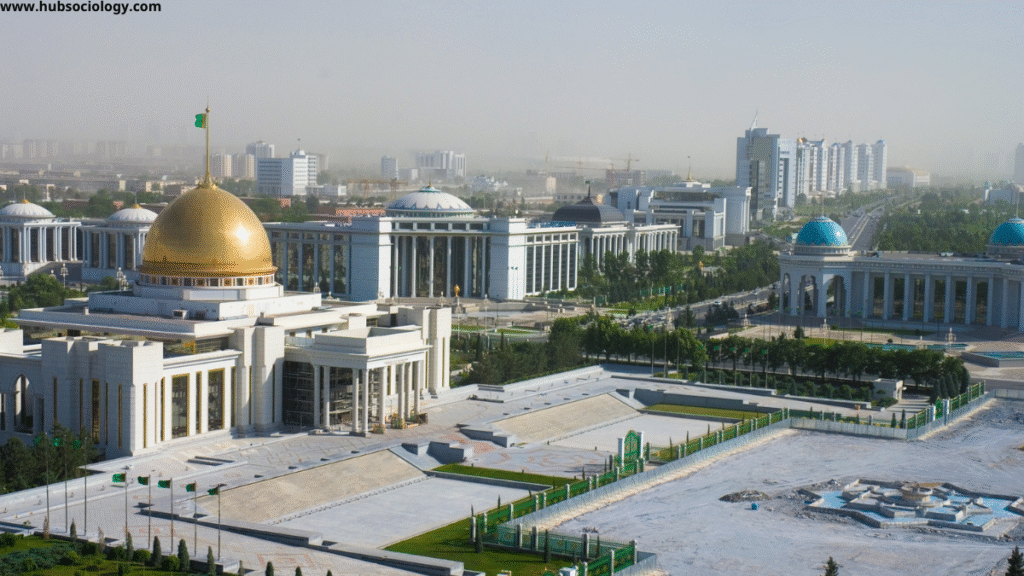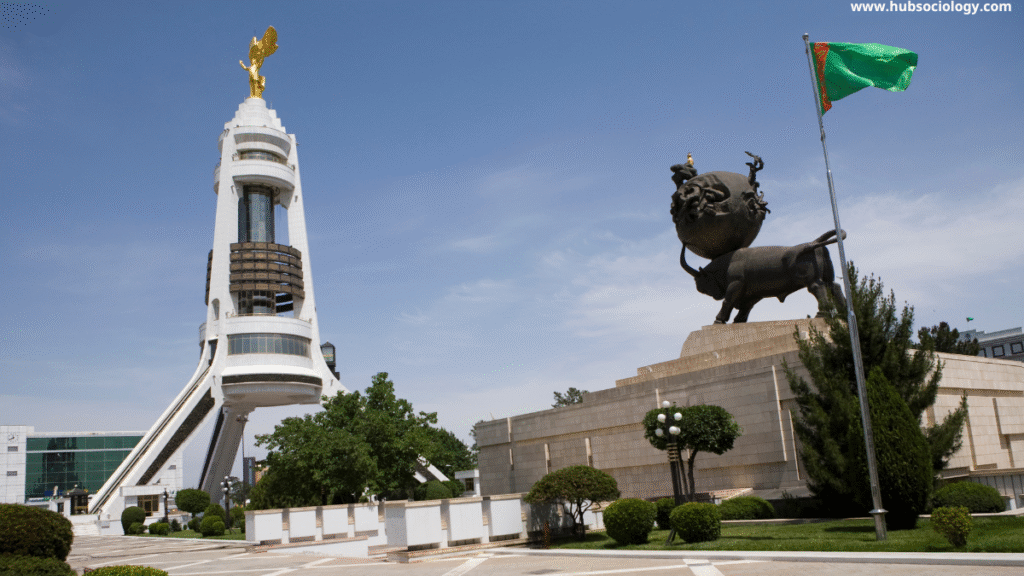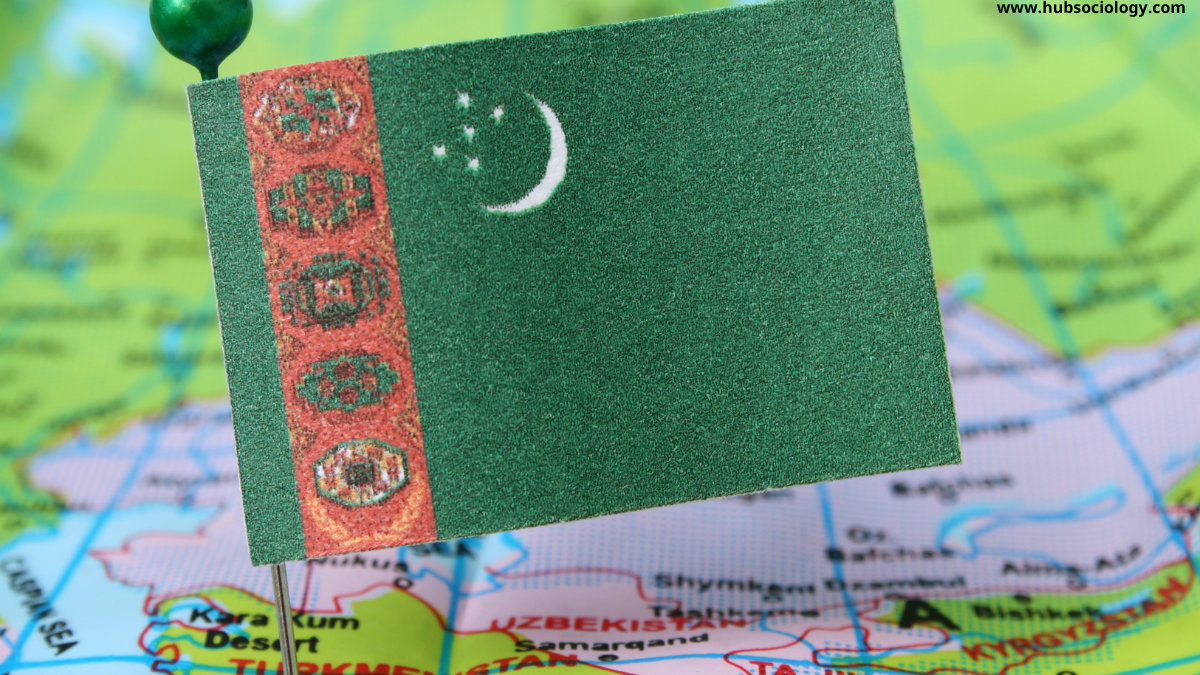Introduction
Turkmenistan, a landlocked Central Asian nation, remains one of the most tightly controlled societies on earth. Since independence from the Soviet Union in 1991, its political system has exhibited hallmark features of authoritarian rule: highly centralized power, pervasive propaganda, tightly managed civil society, and relentless surveillance. This sociological analysis investigates how authoritarianism in Turkmenistan intersects with mechanisms of social control—probing the institutions, cultural strategies, and everyday practices that sustain the regime, and considering their implications for social structure, identity formation, and resistance.
1. Historical Context: Authoritarian Roots and Continuity

The legacy of Soviet governance set the stage for the post-Soviet Turkmen state. Under Soviet rule, Turkmen society was inculcated with centralized governance, ideological conformity, and suppression of dissent. Following independence, President Saparmurat Niyazov rapidly consolidated power, inaugurating personalized authoritarianism through his self-cultivation as “Türkmenbaşy” (“Father of the Turkmens”). His successor, Gurbanguly Berdimuhamedow, preserved and extended this authoritarian framework, albeit with stylistic adjustments. Across both eras, the regime has methodically assembled a tapestry of formal and informal controls—rooted in patronage, ideological self-glorification, and centralized surveillance.
2. Structures of Social Control: Institutions and Bureaucracies
From a sociological standpoint, state-run institutions in Turkmenistan function not merely to administer society but to discipline it.
2.1 Political Monopolization & Party-State Fusion
Turkmenistan’s political scene lacks meaningful pluralism. The ruling Democratic Party (formerly the Communist Party branch) dominates all governance tiers. Other “parties” exist only nominally and lack independent organization or platforms. This fusion effectively eliminates institutional channels for dissent, ensuring uniformity through hierarchical compliance.
2.2 Media, Propaganda, and Controlled Discourse
Media in Turkmenistan are entirely under state control. Television, radio, and print convey only sanitized narratives, extolling the president’s achievements, glorifying national “revival,” and omitting social problems such as censorship, poverty, or regional inequality. Alternative communication (including social media and independent journalism) is systematically blocked. This total control over discourse allows the state to shape collective consciousness, reinforcing obedience and societal consensus around the leadership.
2.3 Surveillance and Security Apparatus
Turkmenistan maintains strict oversight of its citizens. Security services are pervasive and unaccountable, monitoring personal behaviors and reinforcing conformity. It’s widely understood that defiance or even mild criticism can rapidly result in forced exile, imprisonment, or worse. This threat is not idle—it is broadly accepted as credible, shaping behavior through fear. Thus, the population internalizes the risk of defiance, further entrenching compliance even when no explicit enforcement occurs.
2.4 Education and Ideological Socialization
Schools and universities embed the regime’s ideology into curricula. From early childhood, students are taught to reverence the leader through stories, monuments, and ritualized acts of allegiance. Textbooks glorify national history in ways that align with the leader’s narrative—presenting national identity and civic duty as inseparable from presidential cults. This process socializes young citizens into seeing authority as natural, legitimate, and unchallengeable.
3. Symbolic Control and Cult of Personality
Sociologist Antonio Gramsci emphasized that ideological domination operates through consent, not just coercion. In Turkmenistan, the cult of personality is a powerful tool of symbolic control.

3.1 Monuments, Names, and Ritual
Niyazov renamed cities (“Türkmenbaşy”) and months (“Ruhnama”), built golden statues, and embedded these symbols into daily life. Berdimuhamedow, while somewhat less flamboyant, continued this via frequent public pageantry: inaugurations of theaters, grand hospital openings, and televised orchestrations emphasizing his presence. Citizens are exposed to these images and events daily—festivals celebrating state-building, public readings of ideological texts, and choreographed displays foster an aura of omnipresence around the leadership.
3.2 Ritualized Reverence
Formal rituals—such as mandatory public speeches, required pro-presidential slogans in classrooms or workplaces, and compulsory ceremony attendance—manufacture a culture of reverence. These acts blur the line between politics and daily life. Over time, performing these rituals may become second nature, further internalizing loyalty even among those privately indifferent—or resentful.
4. Informal Control, Patronage, and Community Policing
Beyond centralized institutions, the regime depends on informal networks to maintain social control.
4.1 Patronage Networks
Government jobs, commercial concessions, and access to scarce goods often flow through personal connections tied to loyalty. Citizens recognize that demonstrating fealty to the regime may yield practical benefits—better healthcare, education, or housing. Such expectations incentivize compliance. Conversely, marginalized individuals or those perceived as disloyal can be excluded from social services.
4.2 Surveillance Through Community
In many authoritarian contexts, surveillance depends not only on formal agencies but also on informal—often neighborly—eyes. In Turkmenistan, fear of denunciation by colleagues, teachers, or neighbors plays a significant role in controlling behavior. Rumors travel swiftly; people may censor each other or avoid discussing private matters. This communal pressure fosters self-censorship and contributes to a broader “panopticon” effect.
5. Everyday Life Under Authoritarian Control
Weaving through formal institutions, symbolic messaging, and informal networks is the lived experience of everyday Turkmen citizens navigating authoritarianism.
5.1 Public–Private Spheres
In everyday interactions, social life is marked by dual behavior: public performance and private caution. In public, individuals may be expected to express loyalty or praise. In private, critical views are typically voiced only among trusted family members or in whispered terms. This “dual consciousness” blunts solidarity—people are reluctant to organize, for fear of immediate reprisal.
5.2 Family and Gender Dynamics
The family often becomes a site both of solace and of constraint. Families reinforce ideological education and parental admonitions to conform. Particularly for women, social expectations are weighted by traditional norms and the state’s portrayal of idealized domesticity. Departures from these norms—such as abandoning conservative dress codes or raising taboo topics—can invite scrutiny, highlighting how authoritarian norms penetrate intimate spaces.
5.3 Economic Strategies and Informal Resistance
Economic hardship and state mismanagement prompt citizens to find creative survival strategies—informal markets, trading between families, subsistence farming. These acts, though not overtly political, constitute a mild form of everyday resistance. They carve spaces outside formal structures and challenge the regime’s narratives of complete control.
6. Resistance, Resilience, and the Structure of Possibility
Despite stifling social control, Turkmenistan sees subtle forms of resistance—though overt protest is rare and dangerous.

6.1 Covert Networks and Diasporic Communication
Emigrants, students abroad, and family members abroad often serve as conduits for alternative ideas via illicit USB drives, word of mouth, or digital messaging. These small channels undermine the informational monopoly of the state and sustain critical perspectives among families and friends.
6.2 Symbolic Dissent and Reappropriation
Even within totalizing environments, cultural forms can carry veiled critiques. For example, poems, songs, or proverbs hint at suffering, yearning, or criticism—but veil it within metaphor or traditional motifs. These coded expressions allow citizens to affirm shared understanding with peers without risking overt exposure.
6.3 Diasporic Advocacy and International Awareness
Turkmen diaspora communities (in Turkey, Russia, Europe, North America) help raise awareness of human rights violations and publicize clandestine forms of resistance. Through social media, advocacy campaigns, and testimonies, they chip away at the regime’s facade, though the regime retaliates by targeting family members or using consular pressure.
7. Sociological Implications: Identity, Agency and Structure
From a sociological lens, Turkmenistan’s authoritarianism illustrates how structure shapes identity and agency, and how social control is constructed through multiple, overlapping layers.
7.1 Identity Formation
Authoritarian regimes like Turkmenistan construct and constrain identities. Citizens are socialized to see themselves primarily as obedient subjects, defined by loyalty to the leader rather than as autonomous actors. Religious, ethnic, or civic identities that might challenge the state’s primacy are suppressed or co-opted.
7.2 Agency Under Constraint
True agency is constrained—but not wholly extinguished. Practically, individuals negotiate their lives within tight margins—finding small spaces for maneuver, survival, and meaning. Sociologist Pierre Bourdieu described this as “habitus”: internalized dispositions shaped by environment but capable of oriented adaptation. In Turkmenistan, citizens develop behavioral dispositions that combine caution, adaptation to ritual, and quiet reconfiguration of meaning.
7.3 Social Structure and the Reproduction of Power
The regime reproduces its power through structural reinforcement: from the educational system to economic opportunity, from symbolic cults to practical patronage. These elements cohere to enforce compliance and deter dissent. Over time, they help “naturalize” authoritarianism—making it appear the only feasible order.
Conclusion
Turkmenistan offers an archetype of modern authoritarianism sustained through pervasive social control—combining institutional power, ideological domination, surveillance, social co-optation, and saturation of public life with state symbolism. Yet even in this oppressive structure, subtle forms of agency persist: covert communication, informal resistance, cultural codes, diaspora advocacy.
For sociologists, Turkmenistan underscores the interplay between authoritarian structures and everyday social life. It demonstrates how identity, agency, and behavior are shaped—and sometimes subverted—within regimes of high constraint. In studying such a context, we learn not only about the regime’s power but also about the resilience of humanity amid near-total coercion.
Understanding Turkmenistan sociologically compels us to examine both how authoritarianism constructs compliance and where and how social life finds cracks to endure. This dual perspective is essential for grasping both the breadth of social control and the persistence of social agency—even under the most repressive conditions.
Do you like this this Article ? You Can follow as on :-
Facebook – https://www.facebook.com/hubsociology
Whatsapp Channel – https://whatsapp.com/channel/0029Vb6D8vGKWEKpJpu5QP0O
Gmail – hubsociology@gmail.com
FAQs
1. What makes Turkmenistan’s political system authoritarian?
Turkmenistan’s system is authoritarian because power is concentrated in a single leader and ruling party, elections are non-competitive, media and civil society are tightly controlled, and dissent is criminalized. Citizens have limited political freedoms, and the state exerts extensive control over social life.
2. How does the Turkmen government maintain social control?
Social control is enforced through multiple means: state-run education and propaganda, censorship of media, a pervasive surveillance system, patronage networks, compulsory rituals of loyalty, and fear of punishment for dissent.
3. What role does the cult of personality play in Turkmenistan?
The cult of personality glorifies the leader as a near-mythical figure. Monuments, renamed cities, mandatory oaths, and orchestrated public celebrations foster reverence, making loyalty to the leader appear as both a civic duty and cultural norm.
4. How is education used to reinforce authoritarian rule?
The curriculum emphasizes loyalty to the state and the president. Students are exposed to ideologically shaped narratives of history and culture, while critical thinking and alternative perspectives are discouraged. Education thus becomes a tool of political socialization.
5. Is there freedom of the press in Turkmenistan?
No. The media is state-controlled, presenting only pro-government content. Independent journalism is banned, and international news sources are heavily restricted. Online platforms and social media are often censored or blocked.
6. How does surveillance affect everyday life?
Surveillance creates a climate of fear. Citizens avoid discussing politics openly, even in private spaces, fearing denunciation by neighbors or colleagues. This self-censorship prevents collective action and reinforces the regime’s authority.
7. Are there forms of resistance within Turkmenistan?
Direct protest is extremely rare due to risks of imprisonment or exile. However, subtle resistance exists in everyday practices—informal markets, coded cultural expressions, private criticisms, and diaspora communications that circulate alternative ideas.
8. What is the role of patronage in maintaining control?
Access to jobs, housing, and resources often depends on loyalty to the regime or personal connections. This patronage system encourages compliance while punishing dissenters by cutting them off from essential services or opportunities.
9. How does authoritarianism affect identity and social life?
Citizens are encouraged to identify primarily as loyal subjects of the state. Public rituals reinforce conformity, while private spaces become sites of hidden dissent. The result is a dual identity: public compliance and private skepticism.
10. Can Turkmenistan’s authoritarian system change in the future?
Change is possible but uncertain. Structural control mechanisms are deeply entrenched, but economic crises, external influences, or generational shifts may create pressure for reform. For now, the regime’s strategies of control remain resilient.

1 thought on “Authoritarianism and Social Control in Turkmenistan”